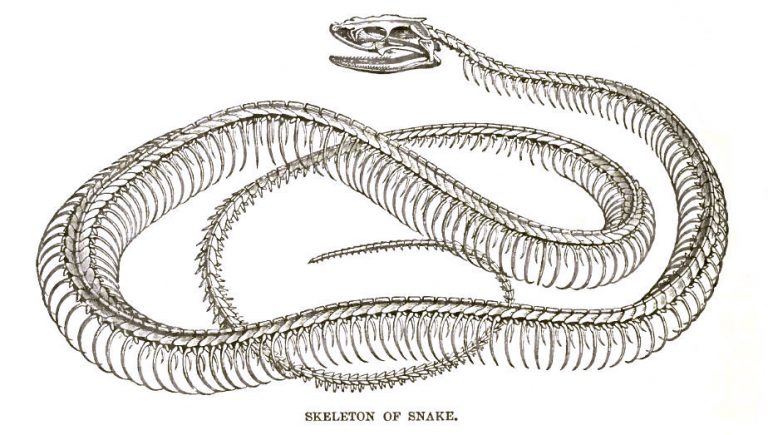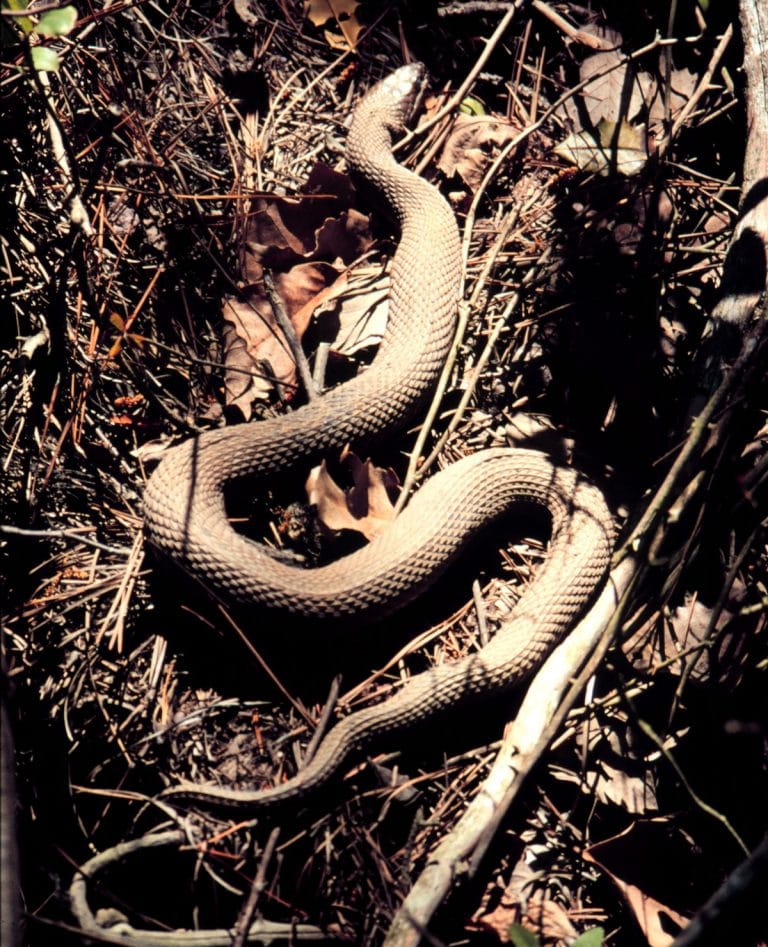Banded Water Snake
Scientific Classification
| Kingdom: | Animalia |
| Phylum: | Chordata |
| Subphylum: | Vertebrata |
| Class: | Reptilia |
| Order: | Squamata |
| Suborder: | Serpentes |
| Family: | Colubridae |
| Subfamily: | Natricinae |
| Genus: | Nerodia |
| Species: | N. fasciata |
| Binomial name: | Nerodia fasciata |
The Banded Water Snake, otherwise known as Southern Water Snake Nerodia Fasciata, is not poisonous and more of an aquatic type Colubrid variety of snake that is widespread in the South East and central parts of the United States. In their common habitat, they are often misled by their manifestation, for other snakes. This also includes the cottonmouth, a venomous snake that is rarely seen.

Anatomy
The standard length to which a banded water snake grows is 30 (76 cm), even though it is capable of growing up to 4 1/2 ft. These keel snakes have solid bodies. Generally they are colored either dark brown or with a background of brownish red and cross bands colored brown. They have broad backs sliming towards the sides. The color of the belly is of a yellow tint, with black and red bright spots. The bands of the adults gradually disappear and they become fully brown in color
Behavior

The temperament of the Banded Water Snakes is rather horrible, but taking care of them is reasonably effortless. At the onset of danger, this variety of snakes usually find a way out.
In such a situation they let go nauseating musk, or bite when they sense danger. If not, they survive with ease amidst human being and other types of animals. Be on your guard, do not lift them up since they get offended and attack back. At times, you come across aquatic snakes that take in food given by you. Still, it is better to avoid this activity. You normally come across these snakes, both day and night. Still, their activities are more prolific at night.
Habitat
These Banded Water Snakes adapt well to water. You can frequently see them taking a sunbath in the flora. When you aggravate them, they slip into the water. These snakes take pleasure in surviving in areas of freshwater such as lakes, rivers, marshy lands, streams and ponds. We see them in the southern most parts of North America. At times we see them hanging on the branches of the trees, on land. These snakes are not good looking pets, even then they do not mind living in captivity. We find these snakes generally in many countries, particularly in Florida, they are but not protected.
As a Pet

Breeding
The Banded Water Snake bears live babies and normally a litter can account for 25 baby snakes during the end of summer. These babies are brilliantly patterned and have a length 8(20 cm). They have glands with musk. Fully grown, they bite. While in captivity, they breed with ease. These snakes mate in the months of January or perhaps in February. After 3 to 4 months of mating, the babies are born.
Housing
It is possible to keep these snakes either single or in groups along with the other snakes of similar habits and sizes, since they never eat other snakes.
You would do well to arrange for a terrarium either in wood or go for a water tank. These snakes are mostly aquatic and require a higher humidity. Maintain the basking area in the terrarium always dry so that they are prevented from infection of the skin, particularly boils. These Banded Water Snakes require a tiny water vessel and a place for hiding. They are fond of climbing, and as such, it is fine to set up some vines, trees or branches placed vertically or slanting.
Have a terrarium with sufficient water. It is essential to keep some tree branches, projecting above the water. These snakes are fond of having a sunbath in those places. Since the snake uses the water area for the purpose of a toilet, facilitate easy cleaning of the tank.
They are comfortable with a temperature nearing 770F (280C) at day and at night they need it cooler. For sustaining the health of your snakes, it is vital to have a lighting of total spectrum that is sufficient for a long time without sustenance. Make use of an incandescent bulb of low voltage with the total spectrum for the day and use a red or blue bulb during the night for providing heat, if required. It is mandatory to place a thermometer to control the temperature, to prevent an excess heat.
Food
Feed your Banded Water Snake with frogs, crayfish, tiny fish and salamanders. These snakes are very agile. So, feed them daily, since their consumption of food is limited. At all times reserve a flat bottom vessel of water.
Handling
If you lift them, they send out a nasty foul smell as a defense mechanism and sometimes they even bite. If you handle them with utmost care, they become calm and avoid the nasty fart. Some of these snakes become quiet when food is offered to them, while many often bite.

Having discovered a fondness for insects while pursuing her degree in Biology, Randi Jones was quite bugged to know that people usually dismissed these little creatures as “creepy-crawlies”.







